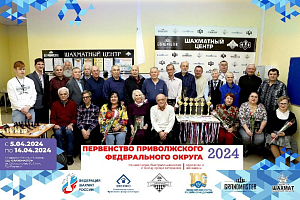8 June 2016
As Easy as Putting on a Hat!
The Belaya Ladya final in the review of Vladimir Barsky.
Before the start of round four the finalists of "Belaya Ladya" found plastic shop bags with traditional gifts inside from the Russian Chess Federation and the sponsors on their chairs. One of the female participants immediately fished a large round badge out of the bag and pinned it to her hat next to two other ones of precisely the same design.
"You did play in the previous two tournaments in Dagomys, did not you?" your correspondent tried to guess.
"That's right!" said the girl to confirm my guess Just have a look at this marvelous hat and her beautiful owner!
On the whole, this year's event has not a few who play without taking their hats off. It stands to reason that the Kyrgyz are always wearing their traditional felt hats, while the rest of the crowd tend towards baseball caps, panama hats, bonnet hats, kerchiefs and various headbands with names unknown to me. This domain is obviously reigned by fashion, which is not to be argued with. Janis Daudzvardis, the legendary blitz player from Latvia, is nicknamed "The Hat": he wears his clothes in the style of a "cine" cowboy. Janis should be pleased to see next generation growing up to replace him: all four young natives of Riga never part ways with their hats. However, theirs are not of brutal cowboy fashion, but rather of a more frivolous design -- bright ones for wearing on a beach. And yet, it keeps fetching good luck: after four rounds the team of Latvia is in the lead, half a point ahead of the awesome Chinese (they are awesome because they are Chinese). The Russian squads are somewhat behind, but we are inclined to believe that they will not fail to constitute a serious competition to the guests.
Latvia versus the Volgograd Oblast, hats versus baseball caps
The geographical coverage is expanding: while the previous event listed six foreign teams, now this number has increased to nine. Every team that played a year ago (Armenia, Belarus, Israel, Kyrgyzstan, Moldova and Mongolia) has not refrained from coming again - they might have taken a liking to the tournament, judging from this. This said, first appearance in the tournament is made by China, Latvia and Estonia. The same increase is true about the Russian regions also, which are represented by this year's 79 versus last years' 76 entities. It needs no saying that the immensity of the Soviet era coverage, when "Belaya Ladya" was reportedly the most massive country's competition with hundreds of thousands, if not millions of children taking part in it, is still way beyond reach, but the tournament is definitely undergoing the stage of revival. It should be emphasized, however, that even in the most difficult and troubled years in the history of Russia the finals of "Belaya Ladya" were never canceled even once! Just as it happens at present, these tournaments served as a springboard for a number of nowadays well-known masters and grandmasters back then. Back then the conditions were obviously not as favorable as they are nowadays, but there would invariably turn up enthusiasts to run those events, which the children were happy to take part in.
But let us go back to the 2016 final. As many as 92 teams have arrived in Dagomys, each of which consisting of 4 secondary school pupils. Children must not be over 14 years of age, with at least one team member being a female player at that. It has turned out, however, that 24 teams feature a "two + two" lineup, whereas five squads are altogether limited to only one representative of the stronger sex. The women's chess boom is apparent in Kamchatka, Mongolia, the Orenburg Oblast, Kalmykia and Tatarstan. It is high time that the next year's tournament regulations be amended with the following wording: "And at least one young male player!"
As for the participants' qualifications, the situation looks as follows: 40 players are candidate masters (33 boys and 7 girls), 158 players are first-category players (104 + 54), and 85 players are second-category players (53 + 32). These figures are quite impressive, especially since the main task of "Belaya Ladya" is the mass introduction of chess. However, quality should by no means fall victim to quantity: this is why the most interesting tournament games are subjected to analysis jointly by children and grandmaster, head coach of the women's national team, Sergei Rublevsky, whereas the merited coach of the USSR Mark Dvoretsky reads lectures to everyone willing to listen. Thanks to the support of the Foundation of Elena and Gennady Timchenko, the strongest Russian team will be entitled, by means of a prize, to a trip to China to play a match against the best school team of that country. This encounter will be carried out in one of the newly-built clubs of the Far East, with Petropavlovsk-Kamchatsky being the most likely venue of the event. Moreover, the Russian winners of "Belaya Ladya" will receive an invitation to take part in one of the sessions to be conducted by the educational center "Sirius".
As tradition has it, a broad program of other than chess events is in store for the tournament participants. Andrey Shumakov, the World Champion in Brain Ring, will be in charge of such trivia contests as "What, Where, When?", "Assorti", "Brain Ring." It has also become part of a good tradition of "Belaya Ladya" to give young folks an opportunity to challenge each other in active sports. Thus, are table tennis, volleyball and football competitions are underway in Dagomys.
Besides, in parallel with "Belaya Ladya" there took place a match between the schoolchildren of the Zabaykalsky Krai and the Pskov Oblast - these regions develop the "Chess in Schools" program thanks to the support of the Timchenko Foundation. A more detailed information will be given as part of the following review.






















